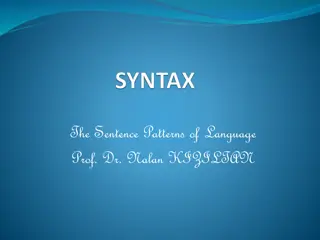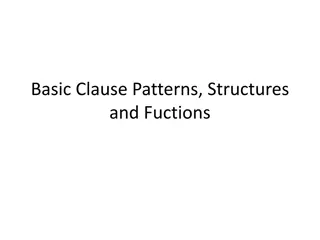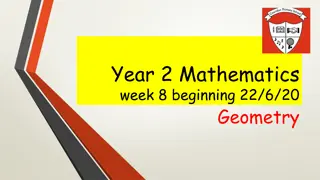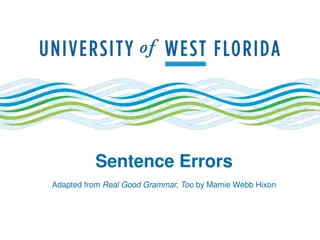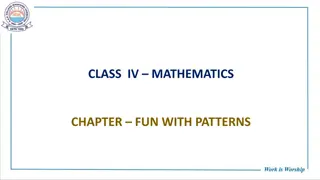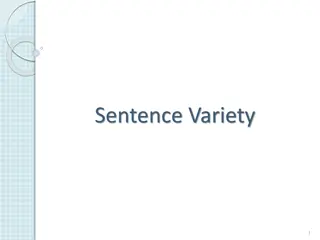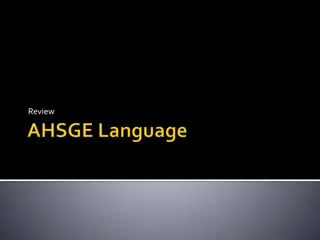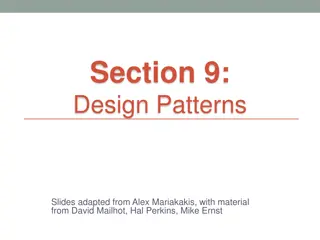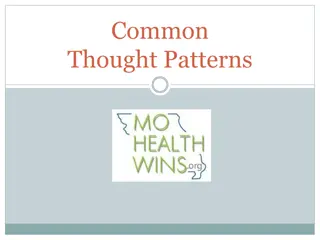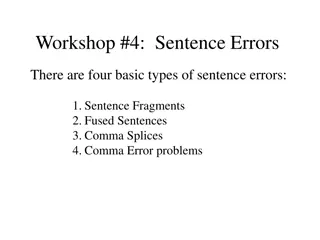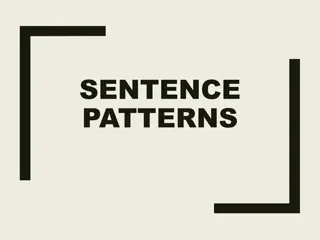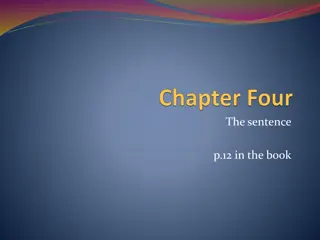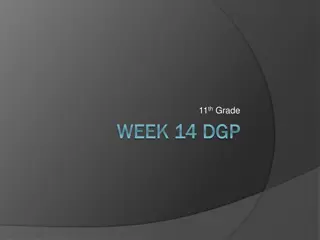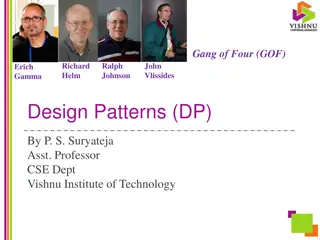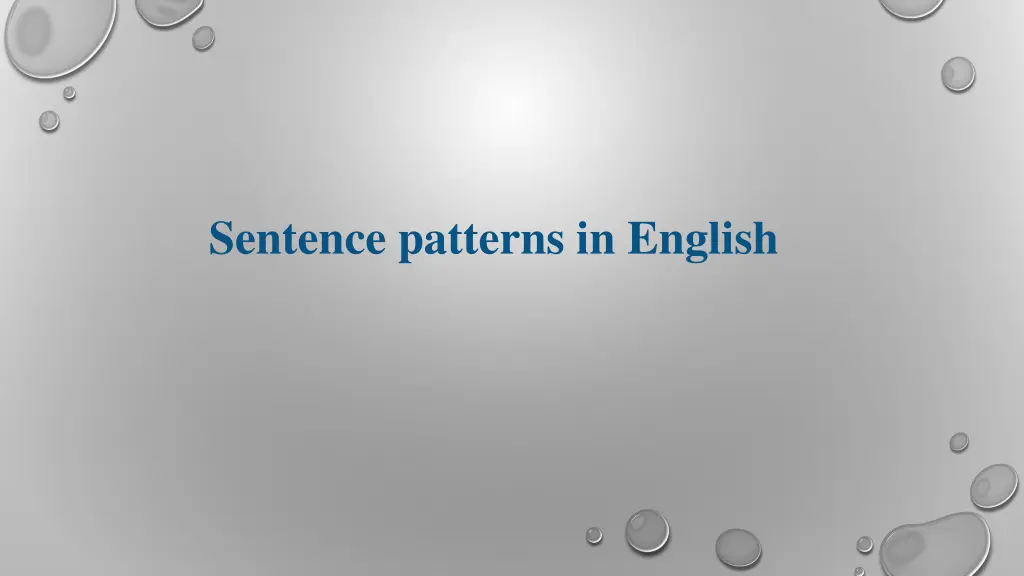
English Sentence Patterns & Types
Explore the different sentence patterns in English, including Subject-Verb, Subject-Verb-Subject Complement, Subject-Verb-Direct Object, and more. Learn about the types of English sentences such as Declarative, Imperative, and Interrogative, with examples and explanations provided. Enhance your understanding of sentence structure and grammar concepts in English.
Download Presentation

Please find below an Image/Link to download the presentation.
The content on the website is provided AS IS for your information and personal use only. It may not be sold, licensed, or shared on other websites without obtaining consent from the author. If you encounter any issues during the download, it is possible that the publisher has removed the file from their server.
You are allowed to download the files provided on this website for personal or commercial use, subject to the condition that they are used lawfully. All files are the property of their respective owners.
The content on the website is provided AS IS for your information and personal use only. It may not be sold, licensed, or shared on other websites without obtaining consent from the author.
E N D
Presentation Transcript
I). Sentence pattern: It is the way words in a sentence are arranged grammatically. For instance, where the noun, the verb, and adjective etc. fall within an individual sentence. There are generally 05 sentence patterns in English: 1) Subject + verb (S.V): This is the simplest of sentence patterns and it is composed of a subject and a verb without a direct object or subject complement. It uses an intransitive verb; that is a verb requiring no direct object. E.g. she laughed, they were dancing, he is singing .etc. 2) Subject + verb + subject complement (S.V.C): Another simple pattern which uses the linking verb (any form of the verb to be ) without an action verb. E.g. the weather is beautiful, he seems tired, she is a teacher, they are Chinese etc.
3) Subject + verb + Direct Object (S.V.O): This pattern uses an action verb and a direct object. e.g. Silicon conducts electricity in an unusual way. he did his homework. 4) Subject + Verb + Indirect Object+ Direct Object: This pattern is similar to the preceding pattern with the addition of the use of Indirect object. e.g. we will send you the report tomorrow she bought her mother a gift he gave me a book. 5) Subject + Verb + Direct Object + Object Complement: This pattern that uses the direct object and object complement is not very common but it is worth knowing. e.g. he painted his room blue. that case made the lawyer famous. we found the house empty.
Declarative, Imperative, and Interrogative Moods English sentences are sometimes classified according to the mood of their verbs. 1. Declarative: Asentence whose main verb is indicative is called a declarative sentence. Most English sentences are declarative; they simply make statements. Example: He drives a car. She is a teacher. They traveled to the U.S. 2. Imperative: Asentence whose main verb gives a command is an imperative sentence. Example: Listen carefully to what he says. Cut a slice of pie for your grandmother.
3. Interrogative: An interrogative sentence asks a question. Interrogatives always end in a question mark (?) a) Inversion (yes or no answer.): Inverted questions typically require a yes or no answer. One common way of asking a question involves inversion that is placing the verb in front of the subject. Simple present- and past-tense verbs require the addition of the auxiliary verb do for inversion. Example: Declarative: Tom is going to the store. Interrogative: Is Tom going to the store? Declarative: Nikita loves pineapple cake. Interrogative: Does Nikita love pineapple cake?
b) Wh- words/questions: Another way of asking a question involves wh- words (who, whom, whose, what, which, where, why, when, and how). The wh- word comes in front of the inverted verb. Example: How do you feel? What are you making for dinner? Why did you call him? Where is the movie playing? Wh-word questions require a specific piece of information as an answer.
Exemples she bought a book. (wh question) They went to the cinema yesterday. (Wh question) I love animals. (inversion) he live in Algeria. ( wh question) I have 2 sisters and 1 brother. (Inversion) She goes to the school by bus. (wh question) My car is the red one. ( wh question) The teacher told the student. (wh question) He can play tenes. (inversion) Tom loves to swim. (inversion)


